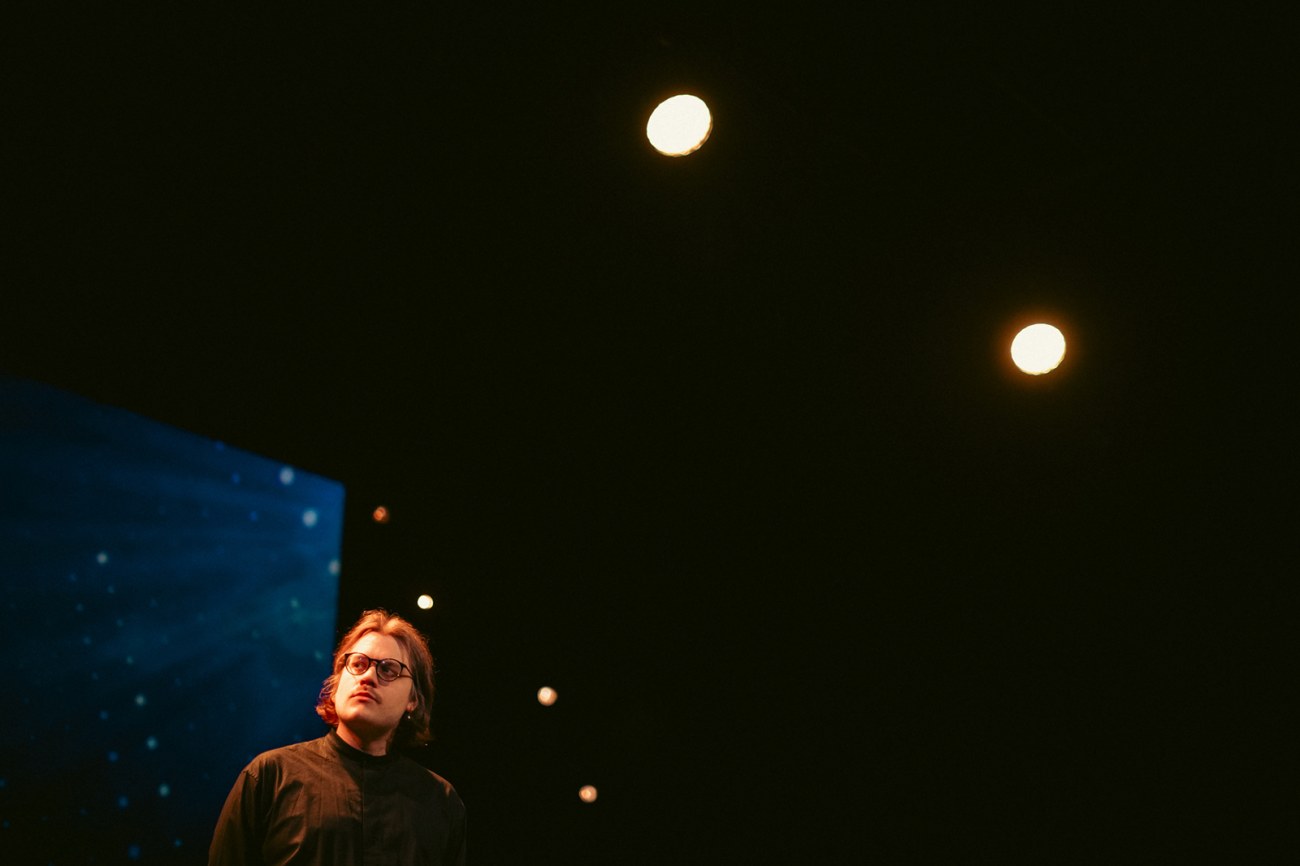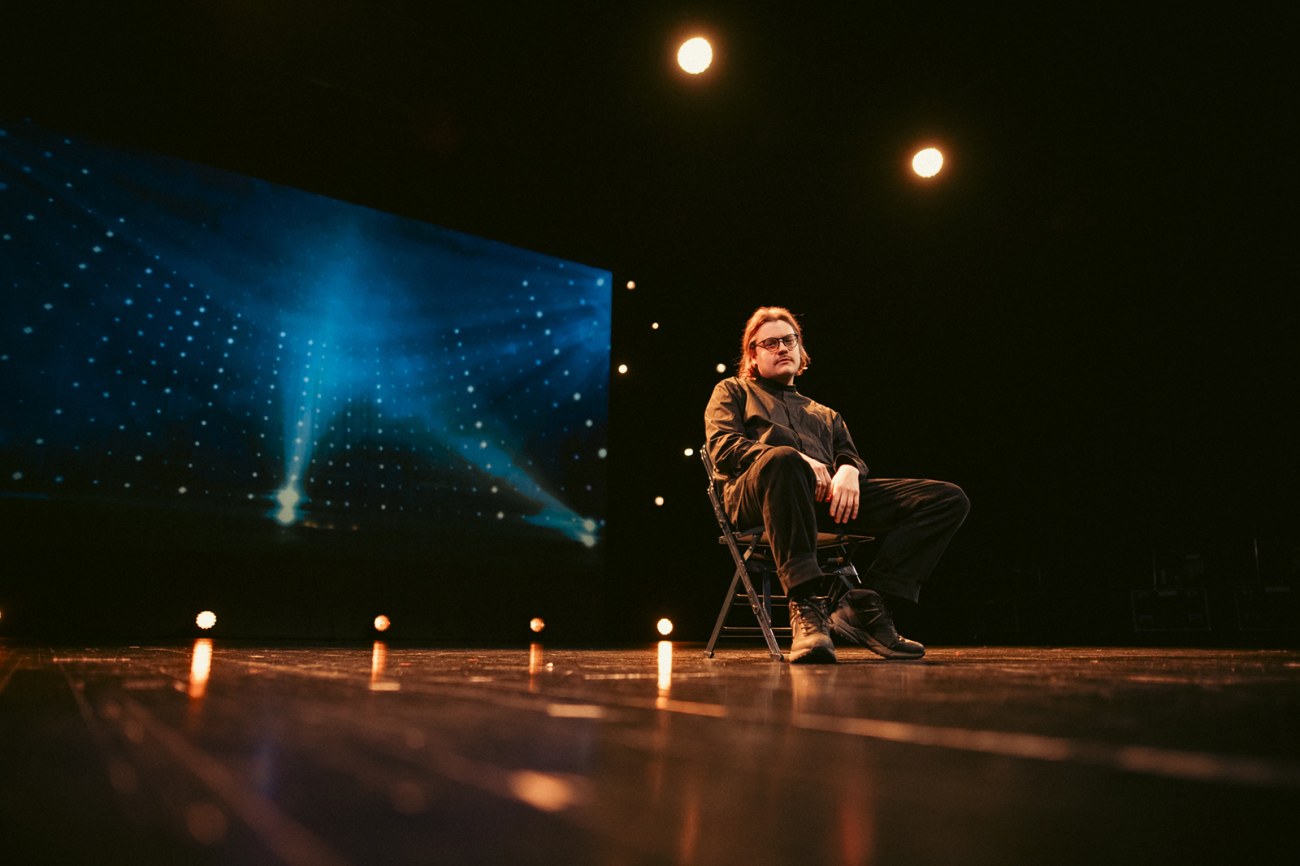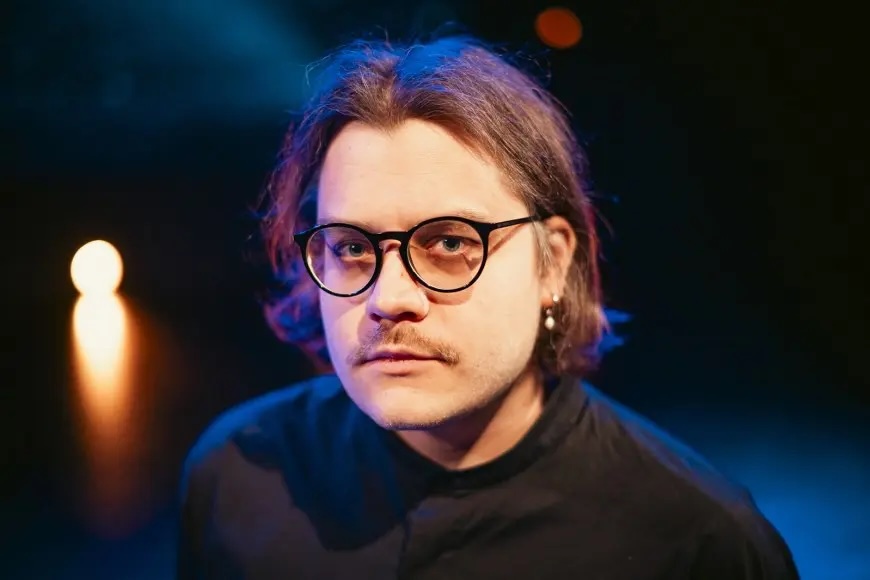“My research explores how generative AI can be used to design and produce virtual worlds and symbiotic artworks that respond to viewers’ emotions,” says Jurgis Peters, a 32-year-old doctoral researcher from Riga, Latvia. Peters’ academic journey has taken him from fine arts to cybersecurity, and now, to the cutting-edge world of generative AI and affective virtual environments. His research is part of Tampere University’s multidisciplinary project ‘The CONVERGENCE of Humans and Machines,’ a unique initiative that examines the future of human-technology interaction.
Peters got interested in the intersection of technology and art in his teenage years, when his fascination with computers led him from video games to experimenting with coding and “breaking stuff.” This interest deepened when he started helping out at a contemporary art gallery in Riga during his last years of high school. “Every now and then, they showcased work from international artists who used technology and interactive installations,” Peters recalls.
Later, his master’s studies in audiovisual arts in Riga allowed him to explore generative AI, laying the groundwork for his current research into virtual worlds that react to the emotions of their viewers.

Peters draws inspiration from movements and artists who blend technology with art to challenge traditional boundaries. Among his key influences are net.art pioneers like the collective ETOY and Evan and Franco Mattes, who used early internet platforms for digital activism and critiques of capitalism. More recent inspirations include AI art pioneers Memo Akten and Mario Klingemann, whose work has shaped Peters’ understanding of generative systems. He also admires Swiss artist Marc Lee, known for his interactive pieces that use real-time data to explore issues like AI ethics, climate change and social media’s impact on society.
Peters’ own work sits at the nexus of art, technology, and emotion. His ambition is to develop affective virtual worlds—spaces that use AI to understand and respond to the emotional states of viewers.
In the world of game development, for example, his work could lead to more dynamic and emotionally responsive environments, while in the fine arts, AI could enable artists to create truly immersive, affective experiences. “I am looking at how AI can be used to create experiences and artworks that viewers can influence based on their own emotional states,” Peters explains.
“In the medical field, these AI-powered systems could be used to create personalised VR applications for guided meditation and therapy,” he says, hinting at potential real-world applications that go far beyond entertainment.
Beyond the practical, Peters’ research also touches on larger questions about the future of human-machine interaction. As AI becomes more integrated into creative processes, it raises profound questions about agency and authorship. “What could the future hold for human-AI interaction in the arts? And importantly, what could be the potential consequences?” Peters asks.
Peters appreciates the multidisciplinary environment at CONVERGENCE. “The multidisciplinary of CONVERGENCE was one of the main reasons why I applied to the programme,” he shares.
“The combination of technology and arts is something that I have tried to synthesise for some time now and the programme seemed to appreciate just that. The fact that I have a supervisor originating from Performing Arts and a supervisor from Computer Science specialising in AI, means that I have both technical guidance and help with conceptually steering my research.”
While the future of human-machine interaction is still uncertain, Peters hopes for the best. “I hope for a future where these advanced technologies are not abused by totalitarian states to control their citizens, but rather are used to elevate the human potential.”
 Photo: Antti Yrjönen
Photo: Antti YrjönenThe main supervisors of Peters are Riku Roihankorpi and Moncef Gabbouj, and the additional supervisors Juho Hamari and Mila Bujić.

